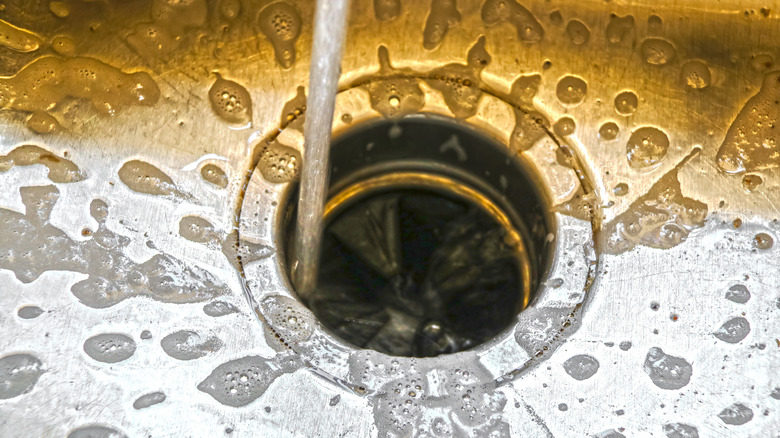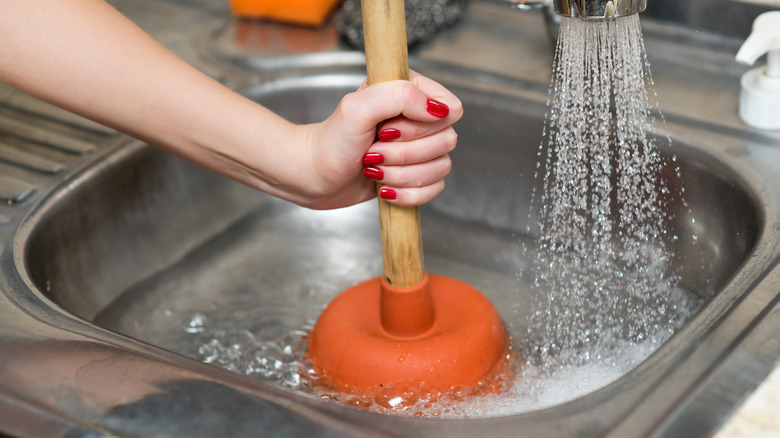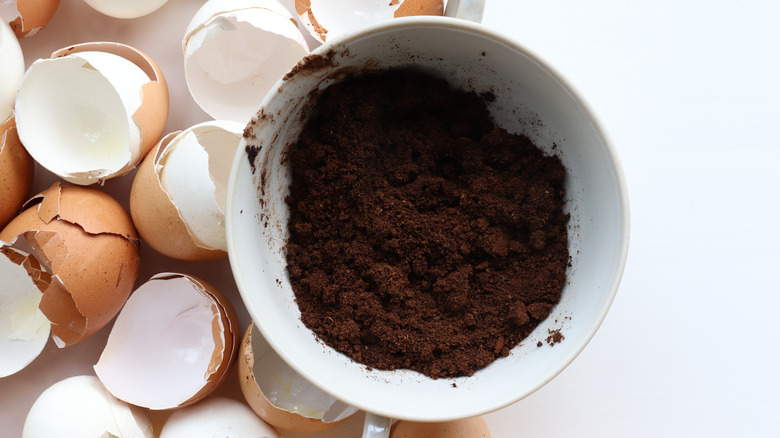Here's How Often You Should Be Cleaning Your Garbage Disposal
Garbage disposals have been around since the 1940s, thanks to an architect named John W. Hammes (via Racine County Eye). He invented the first prototype of the device in his basement in 1927 and began commercial production in 1938. While this food-grinding mechanism has made kitchen cleanup easier for thousands of households since then, eventually, they need to be cleaned themselves.
Just think of all the different kinds of foods that can end up in a garbage disposal, either on purpose or by accident. If you have young children at home or housemates who don't know which foods shouldn't be thrown in a garbage disposal, the "need for clean" may be even greater.
A foul odor or clogged drain are usually the tell-tale signs that it's time to clean your garbage disposal, but that doesn't mean you should wait for those signs before you start cleaning. If you use your disposal on a daily basis (and even if you don't), you should clean it on a weekly basis (per Today). Regular, proactive cleaning and maintenance are both important in keeping your garbage disposal working properly, according to Ace Hardware's Home Expert Lou Manfredini.
How to clean a stinky or clogged garbage disposal
Not sure how to clean your garbage disposal? There are a few methods that work great, depending on how dirty — or smelly — the disposal is, or if there's a clog. All you need is baking soda, vinegar, and boiling water for the deodorizing, and a toilet plunger for the unclogging.
If you're dealing with an odorous garbage disposal, Green Cleaning Coach Leslie Reichert's cleaning tips, shared on Today, can help resolve the issue. First, pour about half a cup of baking soda down the drain and add a cup of hot distilled white vinegar. This combination will create a foam. After a few minutes, pour a quart of boiling water down the disposal.
Reichert's method may also work for a clogged disposal, according to Bob Vila, but if it doesn't, try using a plunger. Home Depot recommends using a flat plunger in the same way you would use it in a toilet. This should loosen the obstruction up enough for you to pull it out with a pair of tongs or pliers. If that method also fails, try some good old-fashioned Drano.
Garbage disposal maintenance
While garbage disposal cleaning is recommended weekly, there are ways to prevent the need for major cleaning or unclogging in the days in between. For example, The Rooter Works recommends using ice cubes for quick cleanings or to dislodge small food pieces. Green Cleaning Coach Leslie Reichert suggests using frozen orange and lemon peels as another option, which will leave your disposal with a nice, citrus aroma (via Today).
Another method for preventing major cleanups, clogs, or other issues involves a drain guard. The Rooter Works claims using a drain guard can prevent hard food particles or other items from accidentally falling into the disposal. In general, you should never throw hard food particles, like fruit pits, egg shells, or bones down a garbage disposal. Then, when you're ready to turn the disposal on, remove the drain guard.
And the final means of keeping your garbage disposal working properly? Just be mindful of what you put inside of it. In addition to hard items, you shouldn't throw meat, vegetable peels, grease, coffee grounds, cooking fat, fibrous foods, or starchy foods, like pasta, in a garbage disposal. Non-food items and harsh cleaning chemicals are also garbage disposal no-nos (per American Home Shield).
With weekly cleanings, combined with efficient methods and regular maintenance, you can keep your garbage disposal functioning properly and odor-free for years (via Magnolia: A Family of Companies).


